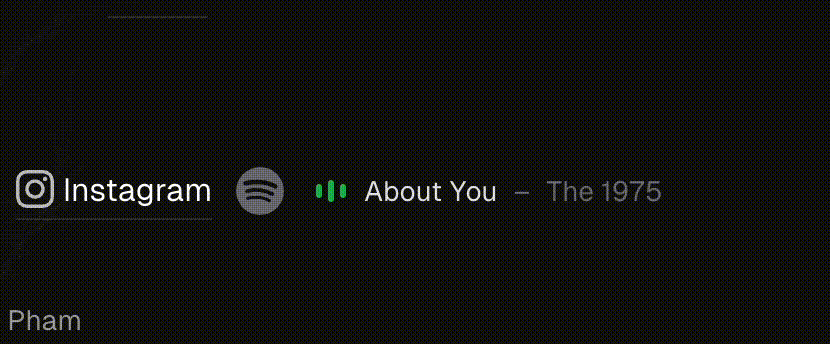In a previous post, we discussed how to generate refresh tokens for Spotify API calls. Now, let’s dive into the exciting part: using Cloudflare Workers to interact with the Spotify API.. Now, let’s dive into the exciting part: using Cloudflare Workers to interact with the Spotify API.
A Worker API to handle Spotify APIs call
Before we begin, make sure you have a basic understanding of Cloudflare Workers and have set up a blank Worker with a configured route. If you need guidance on this, refer to our post on custom domains and routes in Cloudflare Workers.
In your wrangler.toml file, define non-sensitive variables you’ll use in your Worker. For example, let’s specify a list of allowed origins:
[vars]ALLOW_ORIGINS = "'https://abc.dev','http://localhost:3333'"However, for sensitive information like your Spotify Client ID and tokens, follow these steps:
Managing Secrets
Development Secrets
During local development, create a .dev.vars file at the root of your project to store secrets that will be available when running wrangler dev. This file should follow a dotenv-like format:
SPOTIFY_CLIENT_ID=your_client_idSPOTIFY_CLIENT_SECRET=your_client_secretSPOTIFY_REFRESH_TOKEN=your_refresh_tokenDeployed Worker Secrets
To add secrets to the deployed Worker, run the following command in your terminal, replacing KEY with the name of your secret:
wrangler secret put `KEY`Calling the APIs
Depending on your preference, you can structure your source code. For instance, I prefer splitting it into two files: index.ts and spotify.ts.
In spotify.ts, you can encapsulate the logic related to Spotify API interactions. In index.ts, you can handle the routing and overall structure of your Cloudflare Worker.
Vite/Vue Spotify components
I want to archive the same style as my Spotify widget on my old site.

Spotify current playing
It contains a MusicEqualizer.vue component to show an icon with a small animation to indicate a song is playing.
<script setup lang="ts">defineProps<{ wrapperClass?: string}>()</script>
<template> <div class="flex h-3 w-4 items-center gap-0.75" :class="[wrapperClass]"> <span class="h-3 w-0.75 animate-shrink rounded-sm bg-spotify-green" /> <span class="h-1.5 w-0.75 animate-expand rounded-sm bg-spotify-green" /> <span class="h-3 w-0.75 animate-shrink rounded-sm bg-spotify-green" /> </div></template>Aside from custom CSS classes for animation, which are shown below, I also made use of UnoCSS/Tailwind CSS.
@keyframes shrink { 0%, 100% { height: 0.75rem; } 50% { height: 0.375rem; }}
@keyframes expand { 0%, 100% { height: 0.375rem; } 50% { height: 0.75rem; }}
.animate-shrink { animation: shrink ease-in-out 1.5s infinite;}
.animate-expand { animation: expand ease-in-out 1.5s infinite;}Now, for the main component, NowPlaying.vue:
<script setup lang="ts">import useSWRV from 'swrv'
async function fetcher(url: string) { const res = await fetch(url)
return res.json()}
const { data } = useSWRV('<your-worker-route>', fetcher)</script>
<template> <a class="group flex items-center font-medium !border-none" target="_blank" rel="noopener" :href="data?.isPlaying && data?.songUrl ? data.songUrl : '<your-spotify-profile-url>'" > <svg class="h-6 w-6 flex-none fill-zinc-500 transition group-hover:fill-spotify-logo-green" viewBox="0 0 168 168" > <path d="M83.996.277C37.747.277.253 37.77.253 84.019c0 46.251 37.494 83.741 83.743 83.741 46.254 0 83.744-37.49 83.744-83.741 0-46.246-37.49-83.738-83.745-83.738l.001-.004zm38.404 120.78a5.217 5.217 0 01-7.18 1.73c-19.662-12.01-44.414-14.73-73.564-8.07a5.222 5.222 0 01-6.249-3.93 5.213 5.213 0 013.926-6.25c31.9-7.291 59.263-4.15 81.337 9.34 2.46 1.51 3.24 4.72 1.73 7.18zm10.25-22.805c-1.89 3.075-5.91 4.045-8.98 2.155-22.51-13.839-56.823-17.846-83.448-9.764-3.453 1.043-7.1-.903-8.148-4.35a6.538 6.538 0 014.354-8.143c30.413-9.228 68.222-4.758 94.072 11.127 3.07 1.89 4.04 5.91 2.15 8.976v-.001zm.88-23.744c-26.99-16.031-71.52-17.505-97.289-9.684-4.138 1.255-8.514-1.081-9.768-5.219a7.835 7.835 0 015.221-9.771c29.581-8.98 78.756-7.245 109.83 11.202a7.823 7.823 0 012.74 10.733c-2.2 3.722-7.02 4.949-10.73 2.739z" /> </svg>
<div class="ml-4 flex max-w-full items-center truncate"> <MusicEqualizer v-if="data?.isPlaying && data?.songUrl" wrapper-class="mr-2" /> <p v-if="data?.songUrl" class="max-w-max truncate text-sm text-zinc-800 group-hover:text-spotify-green dark:text-zinc-200 dark:group-hover:text-spotify-green" > {{ data.title }} </p> <p v-else class="text-sm text-zinc-700 group-hover:text-spotify-green dark:text-zinc-300 dark:group-hover:text-spotify-green" > Not playing </p> <span class="mx-2 text-sm text-zinc-400 dark:text-zinc-500"> – </span> <p class="max-w-max truncate text-sm text-zinc-400 dark:text-zinc-500"> {{ data?.artist ?? 'Spotify' }} </p> </div> </a></template>Conclusion
I hope you have fun playing around and exploring Cloudflare Worker and Vite/Vue. You should always know there is a limit for the number of requests for a Worker in Cloudflare free account and you should take that into account when implementing it on your site.